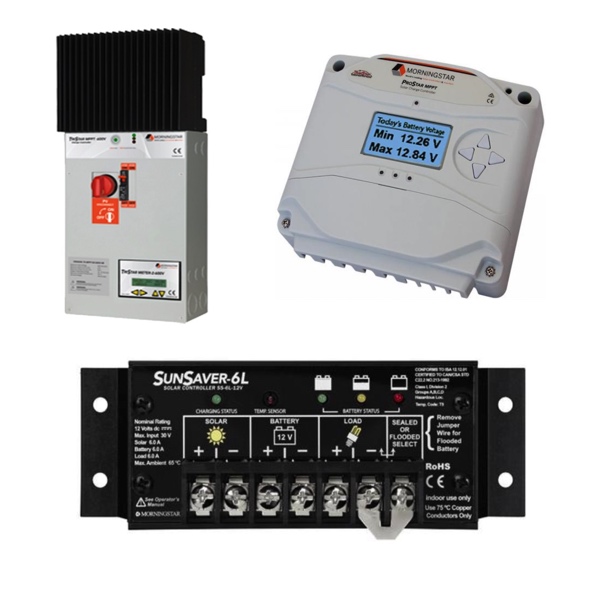Morningstar Charge Controllers

Morningstar solar charge controllers are reliable, trustworthy components of solar energy systems, known for their long-term durability and precision. These charge controllers are most commonly used in off-grid solar systems, where they serve a critical function. Even in small-scale systems, the potential energies involved can be significant; thus, these systems are designed to ensure not just efficiency, but also safety. Morningstar charge controllers regulate the solar charge that is sent to the batteries, keeping it within optimal limits. They maximize the energy harvested from the solar array.
Many controllers for charge offered by Morningstar have built-in functions, such as lighting controls and low-voltage disconnects, that make it easy to manage power when and where you want it. These features are particularly useful in off-grid systems where automation is essential. In such systems, you want the power management to be as streamlined as possible. That is where these built-in functionalities shine. They enable you, the user (or system), to operate reliably without the kind of human interference that might jeopardize system performance.
More Information about Morningstar Charge Controllers
Designed for telecommunication, surveillance, and industrial monitoring, Morningstar charge controllers are a sought-after solution for managing solar charge in battery systems that serve these critical and remote applications. The reason for this is simple: the renewable energy systems in these applications require a charge controller that can maintain the all-important balance between the output from the solar array and the storage battery, and estimate the efficiency of the solar energy being used. Not just any charge controller can do that. Built for the real-world challenges of solar applications, Morningstar charge controllers are a dependable solution that nevertheless provides "high-performance control in renewable energy systems" according to the company.
FAQs
Do MPPT solar charge controllers help to extend battery life and battery voltage in a battery bank?
Yes, MPPT controllers help extend battery life and maintain optimal battery voltage in a battery bank by maximizing energy harvest from the solar array and ensuring efficient, regulated charging.
Solar Charge Controller Basics
Most industrial solar setups consist of solar panels, which capture sunlight and convert it into energy. They only convert that energy during the day, so if power is needed at night or when the sun is blocked by clouds, batteries need to be used. The batteries provide power during night time and when the sun is blocked.
How is it determined when power is being provided by the solar panels or the batteries? What happens when the batteries need to be charged, but the electrical load also requires power? This is where a charge controller comes into play. The charge controller is designed to manage the power that comes from the solar panels and distribute that power to the different loads that need it. Depending on the complexity of the charge controller, it may perform other functions, but its most basic function is to manage and direct power where it is needed in the system.
For example, there are two solar panels wired in series, providing 24 volts of DC power. The electrical load in this case is a small PLC, a radio and a ethernet switch used for communication. This is a common remote SCADA setup in many different industrial scenarios and it is important to keep this site running day and night. In order for this to happen, batteries must be used to provide power at night and when the sun is blocked by clouds. The size of the batteries will depend on the load and how long emergency standby power is required. The batteries need to stay charged and the electrical components in the cabinet must not run out of power. The charge controller has the ability to monitor the amount of charge in the batteries and keep them charged while also providing power to the electrical load. During the day the charge controller might be sending all of the power from the solar panels to the electrical load and none to the batteries, or it may be sending some directly to the electrical load and some to the batteries to charge. It all depends on the needs of the system. At night, the charge controller will detect no power coming from the panels and redirect the battery power to the electrical load to keep the components running as expected.

